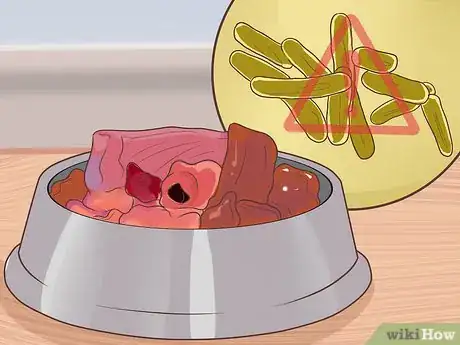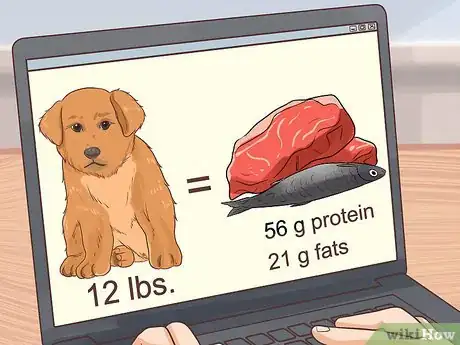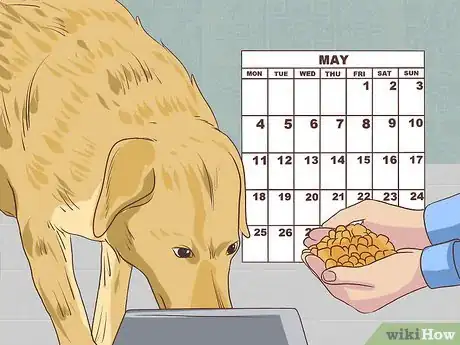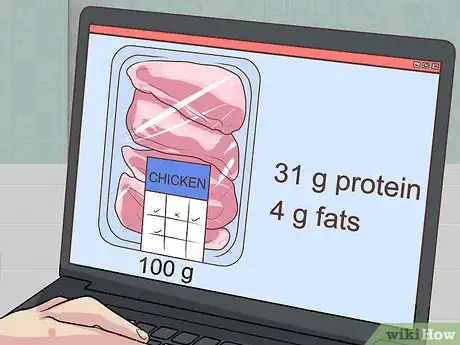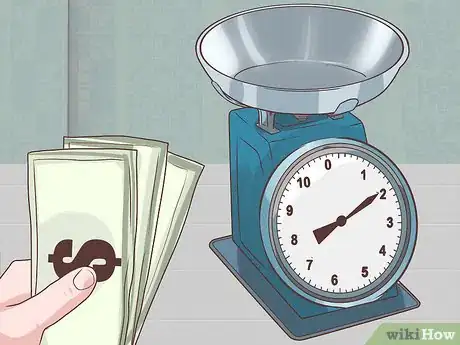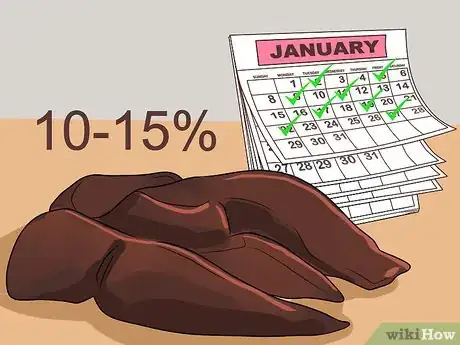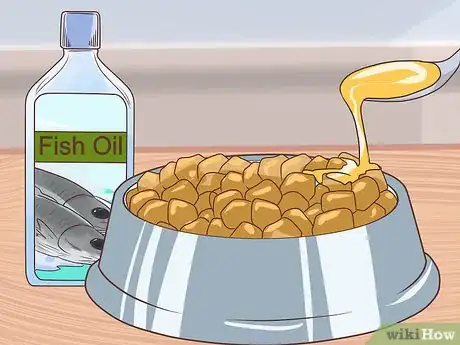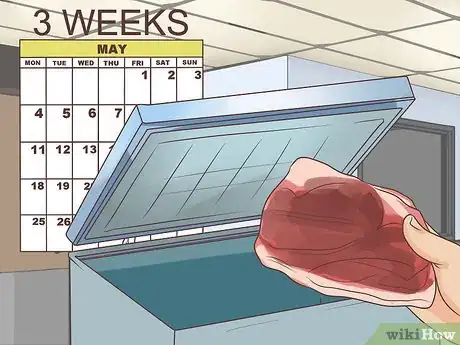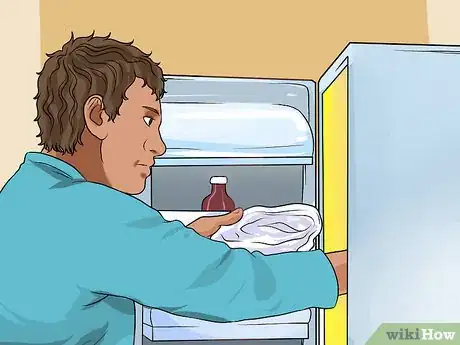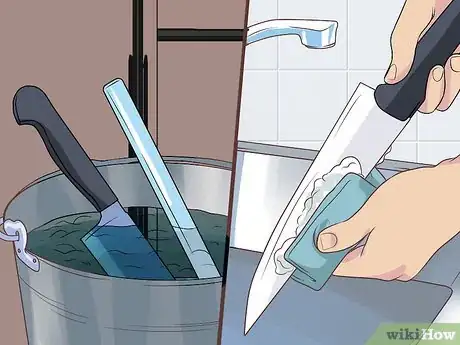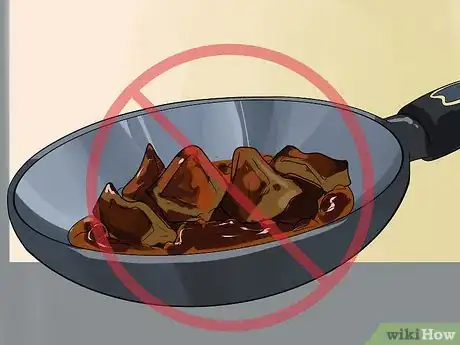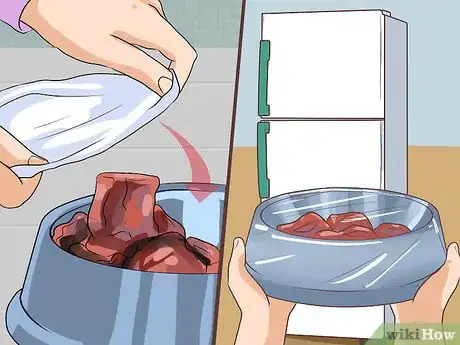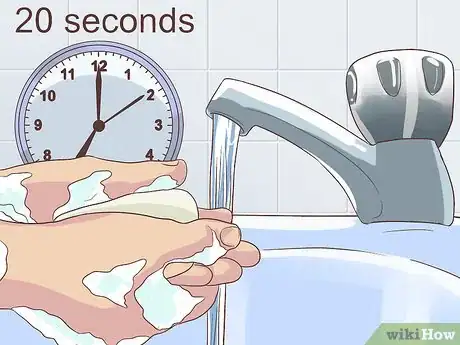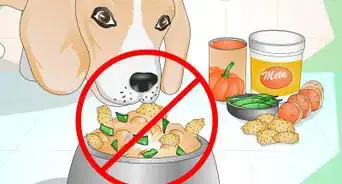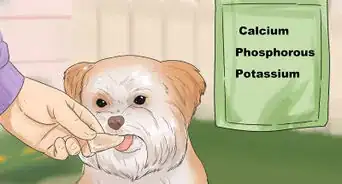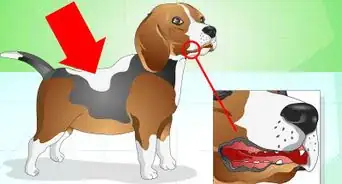This article was co-authored by Elisabeth Weiss. Elisabeth Weiss is a Professional Dog Trainer and owner of Dog Relations NYC, a dog training service in New York, New York. Elisabeth relies on science-based, force-free, and reward-based techniques. Elisabeth offers behavior training, puppy manners, body awareness and injury prevention, diet, exercise and dog nutrition services. Her work has been featured in New York Magazine and on the Dog Save the People podcast. She also trained all the dogs in the movie "Heart of a Dog" by Laurie Anderson that features Elisabeth's journey with Laurie Anderson's and Lou Reed's dog Lolabelle and how her passion for playing the keyboards played a significant role in improving her quality of life after being diagnosed with pancreatic cancer.
There are 8 references cited in this article, which can be found at the bottom of the page.
wikiHow marks an article as reader-approved once it receives enough positive feedback. In this case, 100% of readers who voted found the article helpful, earning it our reader-approved status.
This article has been viewed 597,593 times.
The goal of feeding a raw food diet to dogs is to introduce all-natural homemade foods in place of kibble or canned dog food. Basically, owners who feed raw food to dogs want to replicate what wolves eat in the wild, which is the domestic dog's ancestor. By forgoing commercial kibble for a combination of uncooked bones, meat, small amounts of vegetables and fruit, and organs, raw food enthusiasts believe that this diet creates a healthier dog than ones feed kibble.
Steps
Knowing the Right Balance
-
1Understand the risks. One of the problems with feeding a raw diet is not getting the balance right. You can have too much calcium or too little. You need to offer enough variety that your dog gets the nutrients she needs. You may provide too little or too much fat. All of these actions can lead to health problems with your dog.[1]
- Additionally, you can cause problems if your food is infected with bacteria such as Salmonella or Listeria monocytogenes. Raw foods are more likely to contain these bacteria than dry or canned dog foods.[2]
- However, some raw dog food followers note that a dog's digestive system is more adept at dealing with these bacteria, as it is not as long and more acidic than ours.[3]
-
2Consult with your veterinarian. Your veterinarian can help you find the right balance, as well as help you assess whether your dog is a good candidate for this diet.[4]
- For instance, most veterinarians would not recommend a homemade raw diet for puppies, as it can be difficult to get the balance of calcium and phosphorus correct. This problem can lead to bone deformities in puppies. Also, dogs with cancer should not be on this diet.[5]
Advertisement -
3Do your research. Different dogs need different amounts of protein, and by reading up on the amount of protein your dog needs, you'll be less likely to cause nutrition problems.[6]
- For instance, puppies who are 12 pounds (and who will eventually be about 33 pounds) need 56 grams of protein and a maximum of 21 grams of fat per day, while dogs who are about 33 pounds need 25 grams of protein and 14 grams of fat per day.[7]
- Pregnant and nursing dogs need more, however: a pregnant or nursing dog needs 69 grams of protein and 29 grams of fat per day, if she is about 33 pounds with six puppies.[8]
-
4Know how much your dog needs to thrive. Most dogs need about 2 to 3 percent of their weight per day--that is, 2 to 3 percent of the weight they should be for their breed. Therefore, a 30 pound dog needs 0.6 to 0.9 pounds of food per day.[9]
-
5Know your food. Research the amount of protein and fat in the food you are providing. You need to understand the nutritional make-up of the foods you are feeding your dog to make sure you are balancing his diet correctly.
- For instance, 100 grams of chicken (about 3 ounces) has 31 grams of protein and 4 grams of fat.
-
6Keep phosphorus and calcium at a 1:1 ratio. Meat is high in phosphorous, while bones are the opposite. Other types of raw foods have a balance, such as fish and eggs. Tripe is also a good source of both.[10]
- This ratio doesn't mean your dog's diet needs to be 50 percent bone. Rather, it means that the amount of calcium your dog is getting should be roughly the same as the amount of phosphorous he's getting, usually about 10 percent bone to 90 percent meat.
-
7Buy a kitchen scale. The best way to know what you're feeding your dog is to measure it out. If you try to eyeball it, what you feed your dog could vary vastly everyday.
Feeding Your Dog
-
1Branch out. Tripe and chicken feet may sound gross to you, but your dog doesn't think the same way. To him, meat is meat. Plus, these cuts of meat are often cheaper to obtain. You can also try beef trachea, tails, and testicles. Beef and chicken feet are especially nutritious. [11]
-
2Feed your dog muscle meats. The majority of what you give your dog should be muscle meat, equal to about 3/4 of her diet. Muscle meats can be from most animals, from cows to chickens to lamb. You can also try other meats, such as duck, moose, deer, turkey, rabbit, and goat.[12]
-
3Give your dog a bone. Dogs can and will chew up bones, providing necessary calcium to their diet. Your dog should be getting about 10 percent of his diet from bone.
- In place of bone, you can use dried, ground eggshells. Pour 1/2 teaspoon in for every pound of meat you feed your dog.
- When feeding your dog bones, you can use what's known as "raw, meaty bones," or bones that still have some meat on them.[13]
-
4Use organ meats but not too often. Organ meats such as liver are fine to feed your dog, and in fact, provide essential nutrients. However, they should only make up about 10 to 15 percent of your dog's diet. Try feeding it for a meal once or twice a week, or adding a few bits of it to your dogs meals several times a week.[14]
- Liver by itself should be about 5 percent of your dog's diet, while other organs, such as heart, kidney, spleen, and gizzards should make up the other 5 to 10 percent.
-
5Add nutrients. The other 5 percent or so of your dog's diet can come from other sources, including vegetables, fruits, and grains. When feeding grains, you should cook before you give them to your dog.
- If the meat your feeding your dog is corn-feed rather than grass-fed, you may need to add a flax seed oil or fish oil supplement to provide omega-3 fatty acids. You can also try feeding fatty fish twice a week to help counter this problem.[15]
- You should process vegetables before feeding them to your dog to help her get the most nutrients from them. Try pureeing them or juicing them to help break down nutrients. Alternatively, you can steam the vegetables for a few minutes. Dark, leafy greens are a good choice.[16]
Understanding the Dos and Don'ts
-
1Freeze certain meats. Some meats need to be frozen for a specific time period before you feed them to your dog. This process helps kill parasites that could harm your dog.[17]
- Pork and salmon should be frozen for at least 3 weeks prior to you giving them to your dog. However, some experts recommend never feeding salmon or trout raw.
-
2Thaw in the refrigerator. The safest place to thaw meat is in the refrigerator, as it never leaves meat at an unsafe temperature. Be sure to place something under the package to catch any spills.[18]
-
3Don't wash your meat. It may be tempting to try to rid your meat of bacteria by washing it, but all that really does is spread the bacteria around. While washing it, you can splash it on the counter tops and around the sink, doing more harm than good.[19]
-
4Practice safe handling procedures. Keep all of the utensils you use for preparing raw foods separate from others in your kitchen. Wash them thoroughly in hot water and soap after using them, or put them in the dishwasher. Also, be sure to use disinfectant on any surface that came into contact with the raw food.[20]
-
5Avoid certain foods. You should never feed your dog the following fruits and vegetables: onions, corn on the cob, any fruits with pits, avocado pits, hops, raisins, or grapes. You should also not give your dog walnuts, macadamia nuts, raw dough, alcohol, or chocolate.
-
6Don't feed cooked bones. When giving your dog bones, stick to raw bones. Cooked bones can splinter, causing problems for your dog.[21]
-
7Don't feed weight-bearing bones from large animals. In other words, don't feed bones such as a cow's femur to your dog because they can break teeth and cause digestion problems.
-
8Pick up any leftovers. If your dog doesn't finish all of her food, cover it, and put in the refrigerator after she is done to preserve it.[22]
-
9
Community Q&A
-
QuestionMy dog was diagnosed with leucocytosis. Now she's losing weight. I'm trying to cook for her because if she continues to lose weight, she will have to be put down. Any suggestions?
 Community AnswerMeals consisting of cooked meat and vegetables are the best for sick dogs.
Community AnswerMeals consisting of cooked meat and vegetables are the best for sick dogs. -
QuestionWhat is the best way to add extra fat to a dog's raw diet?
 Community AnswerUse cheap chicken or beef. Both have a high fat content to lower the cost of the product.
Community AnswerUse cheap chicken or beef. Both have a high fat content to lower the cost of the product. -
QuestionDo you have any specific raw diet suggestions for dogs?
 Community AnswerGo with ground meats (chicken breast, turkey necks, beef ribs, and salmon are good for your dog), brown rice (more of a filler, go easy on that), and eggs (chicken or quail). Remember organ meat should not exceed 15%! Freeze wild animal meat for at least 6-8 weeks to kill parasites and do not feed your dog cooked bones.
Community AnswerGo with ground meats (chicken breast, turkey necks, beef ribs, and salmon are good for your dog), brown rice (more of a filler, go easy on that), and eggs (chicken or quail). Remember organ meat should not exceed 15%! Freeze wild animal meat for at least 6-8 weeks to kill parasites and do not feed your dog cooked bones.
References
- ↑ http://www.thehealthyhomeeconomist.com/how-to-assemble-a-healthy-raw-diet-for-your-pet/
- ↑ http://www.fda.gov/AnimalVeterinary/ResourcesforYou/AnimalHealthLiteracy/ucm369141.htm
- ↑ http://www.dogfoodadvisor.com/best-dog-foods/raw-dog-food/
- ↑ http://moderndogmagazine.com/articles/raw-debate/756
- ↑ http://pets.webmd.com/dogs/guide/raw-dog-food-dietary-concerns-benefits-and-risks?page=4
- ↑ http://dels.nas.edu/resources/static-assets/banr/miscellaneous/dog_nutrition_final_fix.pdf
- ↑ http://dels.nas.edu/resources/static-assets/banr/miscellaneous/dog_nutrition_final_fix.pdf
- ↑ http://dels.nas.edu/resources/static-assets/banr/miscellaneous/dog_nutrition_final_fix.pdf
- ↑ http://www.dogsnaturallymagazine.com/raw-feeding-primer/
- ↑ http://www.dogsnaturallymagazine.com/raw-feeding-primer/
- ↑ http://www.dogsnaturallymagazine.com/raw-feeding-primer/
- ↑ http://www.dogsnaturallymagazine.com/raw-feeding-primer/
- ↑ http://www.thehealthyhomeeconomist.com/how-to-assemble-a-healthy-raw-diet-for-your-pet/
- ↑ http://www.dogsnaturallymagazine.com/raw-feeding-primer/
- ↑ http://www.dogsnaturallymagazine.com/raw-feeding-primer/
- ↑ http://www.dogsnaturallymagazine.com/raw-feeding-primer/
- ↑ http://www.dogsnaturallymagazine.com/raw-feeding-primer/
- ↑ http://www.fda.gov/AnimalVeterinary/ResourcesforYou/AnimalHealthLiteracy/ucm373757.htm
- ↑ http://www.fda.gov/AnimalVeterinary/ResourcesforYou/AnimalHealthLiteracy/ucm373757.htm
- ↑ http://www.fda.gov/AnimalVeterinary/ResourcesforYou/AnimalHealthLiteracy/ucm369141.htm
- ↑ http://www.dogsnaturallymagazine.com/raw-feeding-primer/
- ↑ http://www.fda.gov/AnimalVeterinary/ResourcesforYou/AnimalHealthLiteracy/ucm369141.htm
- ↑ http://www.fda.gov/AnimalVeterinary/ResourcesforYou/AnimalHealthLiteracy/ucm369141.htm
- ↑ http://www.fda.gov/AnimalVeterinary/ResourcesforYou/AnimalHealthLiteracy/ucm369141.htm
About This Article
Feeding your dog a raw food diet is possible, but you'll need to work with your vet and do a lot of research to make sure your dog is healthy enough first. Depending on your dog's size, age, and weight, it'll need a certain amount of protein and fat, so you'll need to research this first. This will ensure you don't underfeed or overfeed it. Once you've chosen the raw meat you want to feed your dog, look up how much protein and fat is in the food so you can work out how much to feed your dog. For more tips, including how to store and prepare raw meat for your dog, read on!
